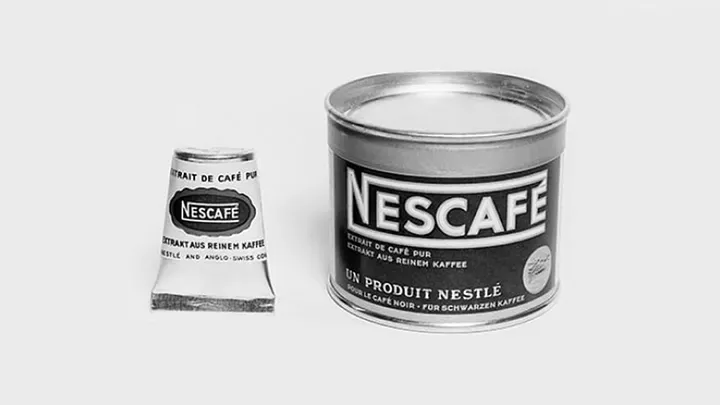Nestlé chemist Dr. Max Morgenthaler worked for seven years to develop a soluble instant coffee that would preserve coffee's natural flavor and aroma.
The challenge was to create a product that could be easily prepared by simply adding water while maintaining the quality of real coffee.
On April 1, 1938, Nescafé was officially launched in Switzerland.
This instant coffee was made using the spray-drying method.
This method, also known as flash drying, involves spraying hot coffee liquid into a high-temperature drying tube and quickly drying it, producing a fine powder. It has the advantage of being easily soluble in cold water and is highly suitable for mass production, but because it is produced at high temperatures, the aroma and acidity tend to evaporate slightly, making the bitterness more pronounced.
It was marketed as a "powdered extract of pure coffee" that retained the coffee's natural flavor but could be prepared by just adding hot water.
The name itself cleverly combined "Nestlé" with "café," the French word for coffee.
The initial target market included single men who could finally make decent coffee without help, and middle-class housewives who wanted to serve coffee quickly when guests arrived unexpectedly.
The product was also aimed at mountaineers, yachtsmen.
World War II proved pivotal for Nescafé's success -
it became a staple in US military rations, and American soldiers became brand ambassadors after the war, spreading their love of the instant coffee across Europe and beyond USA.

Comments